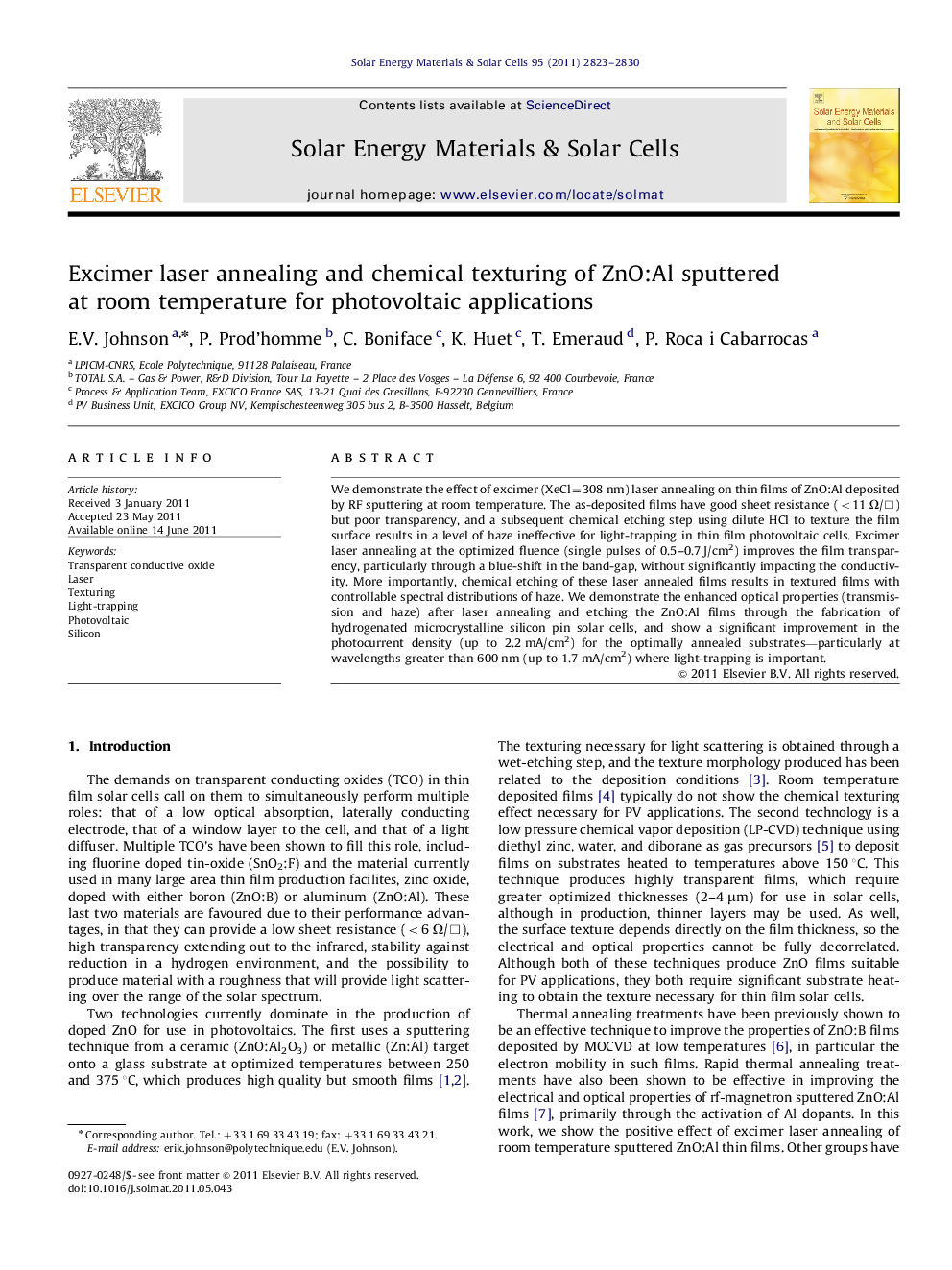| Article ID | Journal | Published Year | Pages | File Type |
|---|---|---|---|---|
| 78615 | Solar Energy Materials and Solar Cells | 2011 | 8 Pages |
We demonstrate the effect of excimer (XeCl=308 nm) laser annealing on thin films of ZnO:Al deposited by RF sputtering at room temperature. The as-deposited films have good sheet resistance (<11 Ω/□) but poor transparency, and a subsequent chemical etching step using dilute HCl to texture the film surface results in a level of haze ineffective for light-trapping in thin film photovoltaic cells. Excimer laser annealing at the optimized fluence (single pulses of 0.5–0.7 J/cm2) improves the film transparency, particularly through a blue-shift in the band-gap, without significantly impacting the conductivity. More importantly, chemical etching of these laser annealed films results in textured films with controllable spectral distributions of haze. We demonstrate the enhanced optical properties (transmission and haze) after laser annealing and etching the ZnO:Al films through the fabrication of hydrogenated microcrystalline silicon pin solar cells, and show a significant improvement in the photocurrent density (up to 2.2 mA/cm2) for the optimally annealed substrates—particularly at wavelengths greater than 600 nm (up to 1.7 mA/cm2) where light-trapping is important.
► Room temperature sputtered ZnO:Al used as starting substrate for thin-film PV. ► Excimer laser annealing improves optical transmission of ZnO:Al. ► Chemical etching of ZnO:Al results in elevated level of haze from 400 to 1000 nm. ► PIN μc-Si:H solar cells show resulting increase in JSC of 2.2 mA/cm2.
